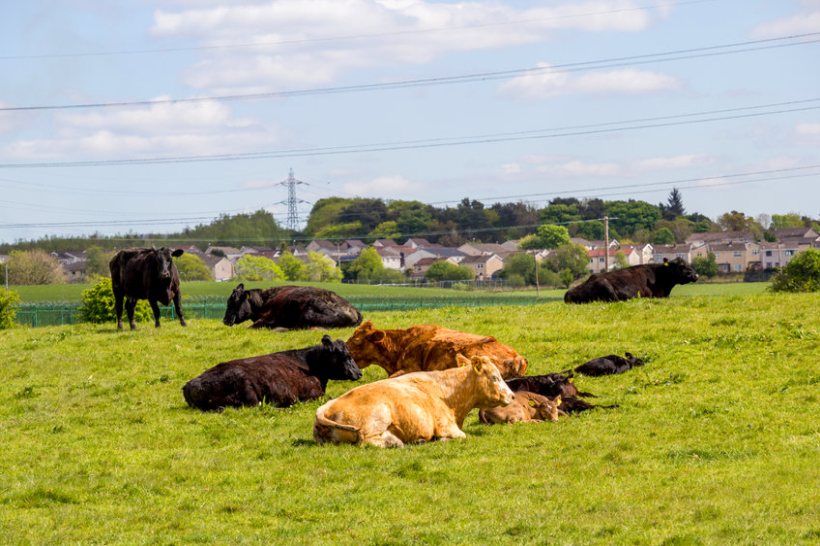
AHDB has analysed what the newly announced UK and New Zealand free trade agreement means for British agriculture.
A 'far-reaching' free trade agreement (FTA) between New Zealand and the UK has been finalised, according to the Department of International Trade (DIT).
It is the latest deal signed by the UK following Brexit, and will end tariffs on goods between the two countries.
Sarah Baker, AHDB's senior strategic insight manager, looks at what it means for British farming sectors.
In headline news, this has seen NZ agree to eliminate all tariffs on UK products entering the country from day 1 of the agreement entering into force.
In return, the UK has agreed to eliminate 96.7% of tariffs for NZ products entering the UK from day 1.
Importantly, the exceptions are the UK’s sensitive agricultural products, including beef, sheepmeat and cheese. For these products, a transitional tariff rate quota (TRQ) will be applied.
For beef, tariffs will be eliminated over a period of ten years. During this time, a TRQ of 12,000 MT in year 1, rising in equal increments to a TRQ of 38,820 MT in year 10, will be applied.
Any product exceeding the TRQ will be subject to the World Trade Organisation’s (WTO) most favoured nation tariff rate (MFN).
Between years 11 and 15, a product-specific safeguard will be in place, limiting beef imports into the UK to 43,056MT in year 11 and rising in equal increments to 60,000 MT in year 15.
Any product exceeding this safeguard will be subject to a 20% tariff. This safeguard will be removed after year 15, at which time beef trade will be fully liberalised.
For sheepmeat, the UK will liberalise trade after 20 years. As for beef, a transitional TRQ starting at 35,000 MT for years one to four, rising to a TRQ of 50,000 MT for years five to 15 will be implemented.
Any product exceeding these quantities in any given year will be subject to WTO MFN tariffs. This TRQ is for any given year and will only be triggered once the WTO country-specific TRQ of 114,000 t has been filled by 90%.
Between years 16 and 20 a product specific safeguard will be in place, as for beef, meaning the UK sheepmeat sector will have some protection for 20 years, after which trade will be fully liberalised.
Again, the TRQs have been expressed in volume terms, not carcase weight equivalent (CWE) which is an important consideration for the UK market, in particular for the beef sector.
In the dairy sector, butter tariffs will be eliminated over five years in six equal reductions. The transitional quota will open at 7,000 MT and increase in equal instalments to 15,000MT in year five.
Similarly, cheese will become tariff free over five years, with the transitional quota starting at 24,000 MT and rising in equal instalments to 48,000 MT by year five.
Trade in both butter and cheese will be fully liberalised by year six onwards.
There is no recognition of products of geographical indication (GIs) within the FTA, but there is a commitment that if NZ were to implement such a scheme domestically, that the UK would also benefit from similar protection.
Like the Australian FTA, rules of origin (RoO) are designed to facilitate trade between the two parties and make is easier for traders and customs authorities to prove country of origin.
For agricultural products, country of origin will be determined by change of tariff classification and specific processing rules, reflecting where the majority of the processing has taken place.
There will also be a 15 percent tolerance threshold for non-originating materials by value.
New Zealand and the UK already benefit from a world-leading sanitary agreement that recognises the equivalence of sanitary measures maintained by both countries for the protection of public and animal health.
The FTA will build on this, alongside each country’s WTO commitments. Importantly there is a commitment that sets out the understanding that low-risk food products within the scope of the chapter will not require health certification, other than for phytosanitary purposes.
The agreement also includes a commitment to enhance cooperation on antimicrobial resistance.
On animal welfare, there is a non-regression and non-derogation clause not to weaken animal welfare for farmed animals in order to encourage trade.
There is recognition that New Zealand and the UK’s farming practices are substantively different, but each country accords a high priority to animal welfare in those practices and that the different systems provide comparable outcomes.
The agreement also stipulates that NZ will not seek any further market access that may result from the UK’s accession to CPTPP.
Next steps will require scrutiny of the agreement by the Trade and Agriculture Commission for a three-month period, then scrutiny by government and select committees before the process of ratification is triggered.
This is likely to take until the middle of 2023 to allow time for the necessary legislation to be in place ahead of ratification of the deal.
